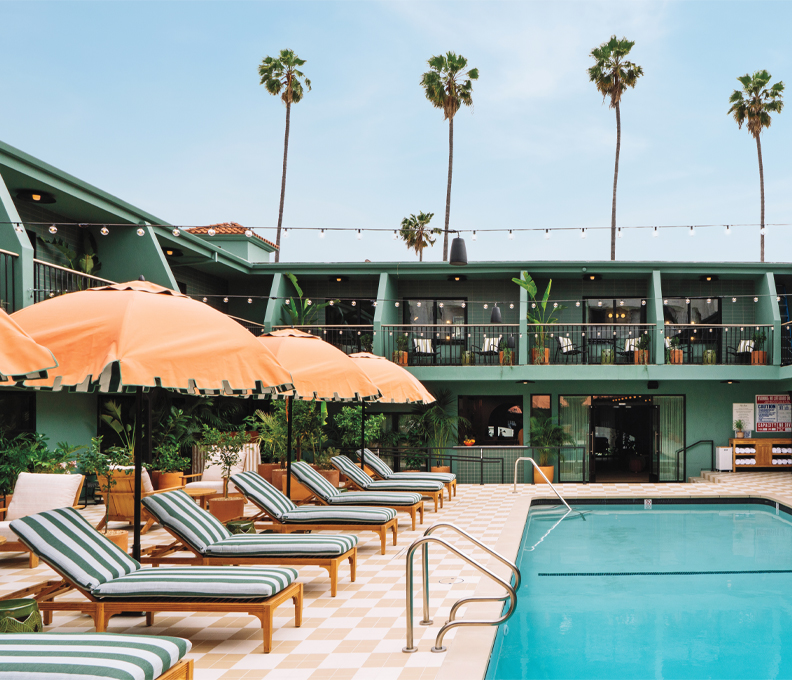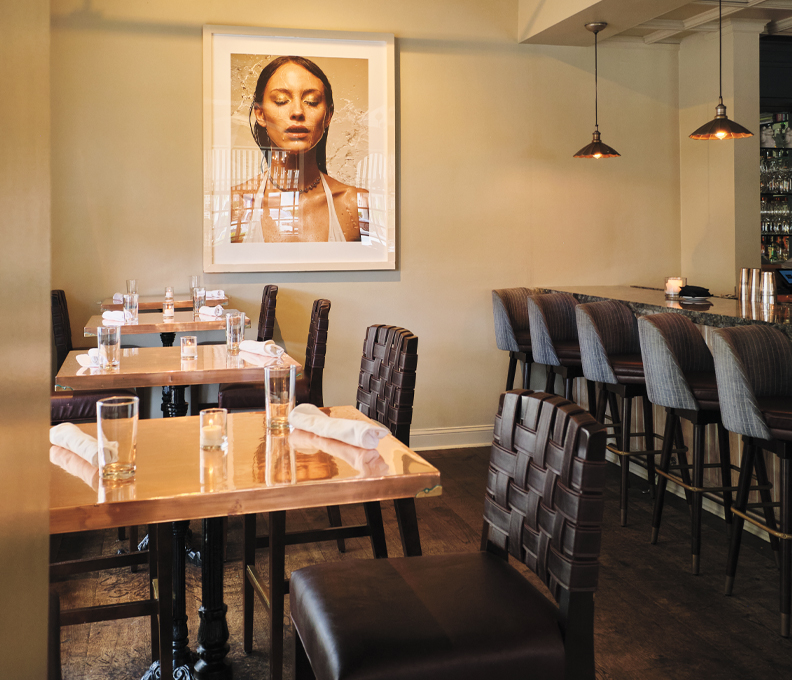Here’s What It Was Like to Watch the Eclipse on a JSX Private Jet
The pilot maneuvered the plane to provide us with the best possible views, which involved banking and turning in a way that felt unfamiliar
April 8, 2024
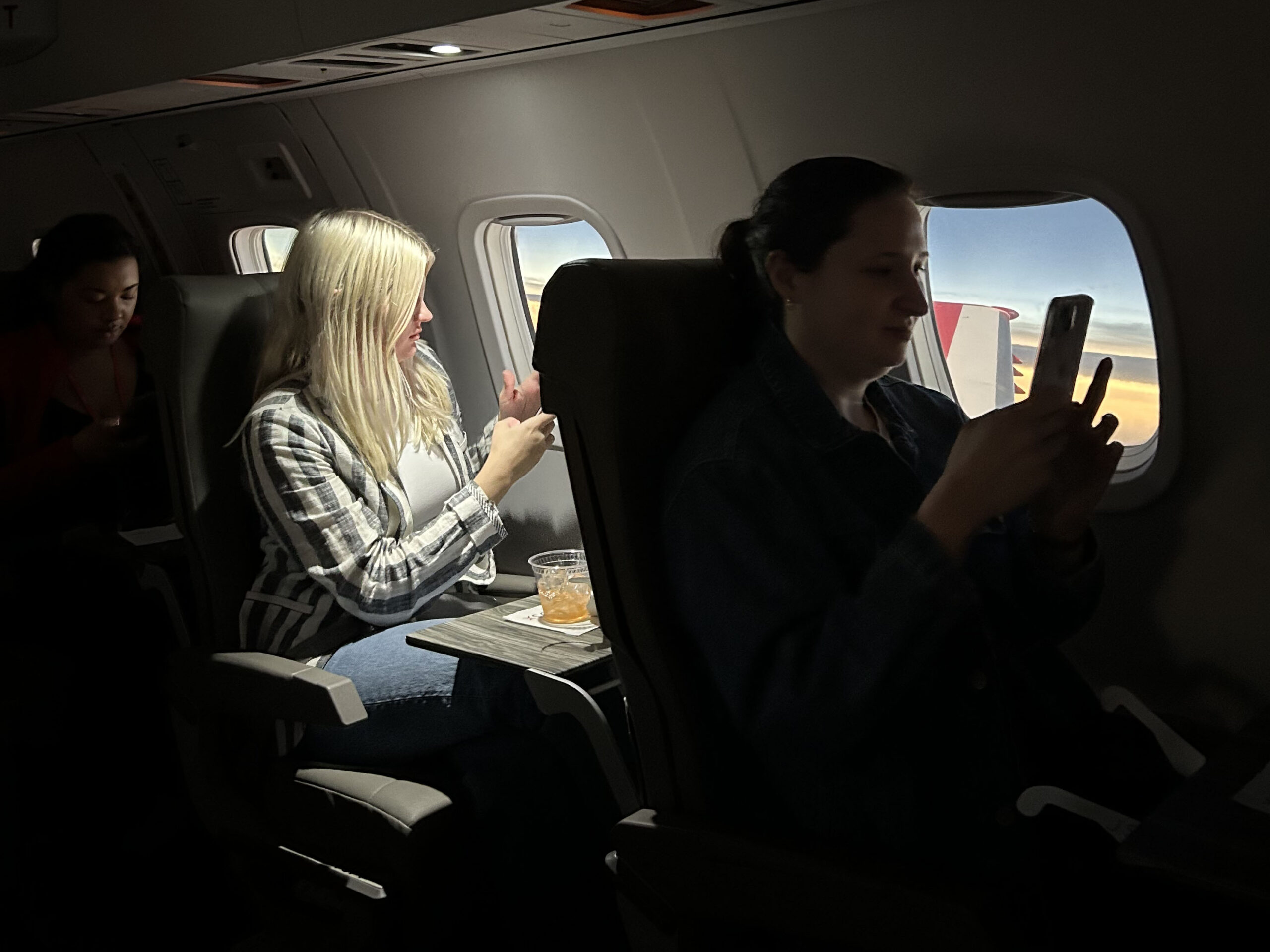
Photo: Courtesy of Alesandra Dubin
I’m not usually known for my interest in cosmic events, but I am always interested in cool aviation opportunities. That’s why I didn’t hesitate to accept when JSX invited me to their special eclipse viewing flight on April 8.
I flew from Los Angeles to Dallas to join JSX 4824, the plane that would fly in and out of JSX’s dedicated hangar at Dallas-Love Field. We would fly north and circle the region in the path of totality, from 1 to 3 pm CT.

Photo: Courtesy of Alesandra Dubin
The weather forecast was uncertain, and the skies were overcast when I woke up in Dallas. I was grateful that JSX would take us above the clouds. As it turned out, the weather cleared up in time for people on the ground to view the eclipse. By boarding time, the skies were mainly sunny, and we made our way onto the tarmac.
Greeting guests individually as we boarded the Embraer 145 aircraft was former NASA astronaut and JSX pilot Bill Gregory. He was joined in the cockpit on this flight by Chris Swilley, a former US Navy F14 pilot.
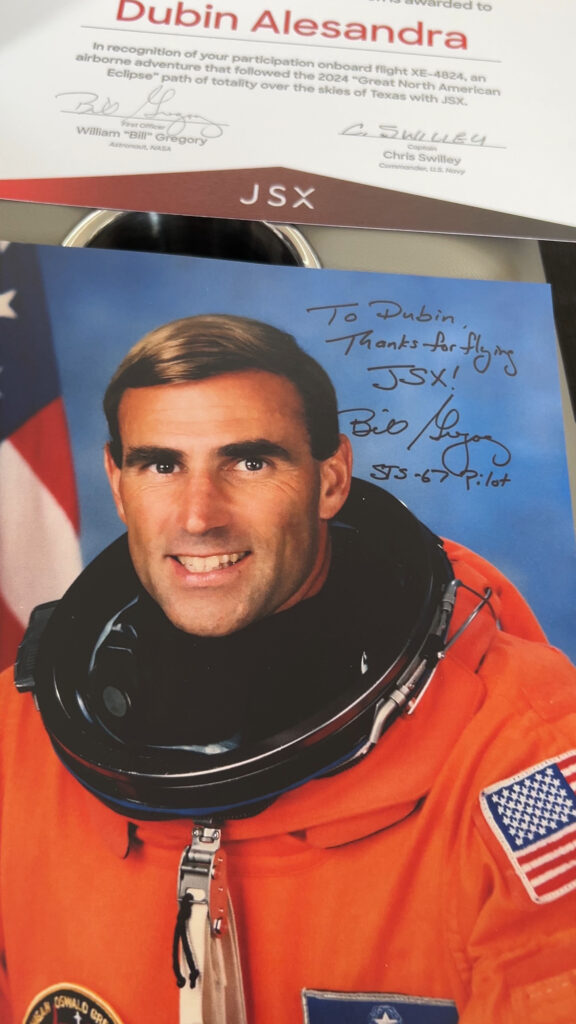
Photo: Courtesy of Alesandra Dubin
Also welcoming us on board was flight attendant Heather Kuhn, a 37-year veteran of the career and former Pan Am flight attendant. In other words, It was strictly the A-team for this special experience.
I found my seat, 8C, decked with a pair of cardboard eclipse glasses, plus a special goodie bag for the occasion. Inside were on-the-nose snacks, including Astronaut Food freeze-dried ice cream sandwiches and Moon Pies, plus sunscreen, a JSX hat, a personalized “certificate of mission completion,” and a personalized autographed photo of Gregory in his astronaut uniform.
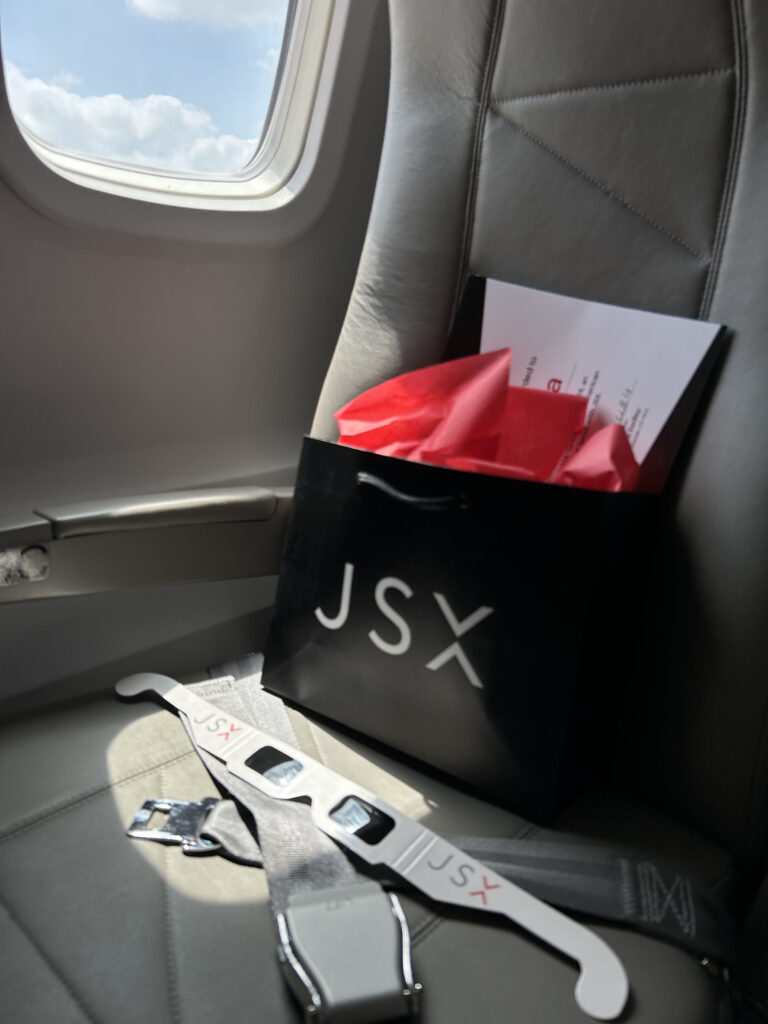
Photo: Courtesy of Alesandra Dubin
Every seat offered a window view, as with JSX’s standard 1-by-1 configuration.
On board the JSX Embraer were only 30 passengers, including a small group of journalists (including myself), contest winners, lucky STEM students, and their guests.
It is worth noting that the maximum number of passengers allowed on the JSX aircraft is 30, as per regulations. Unlike other airlines, such as Delta, the JSX flight did not have tickets available for purchase by the general public, making it exclusive to the passengers mentioned above.
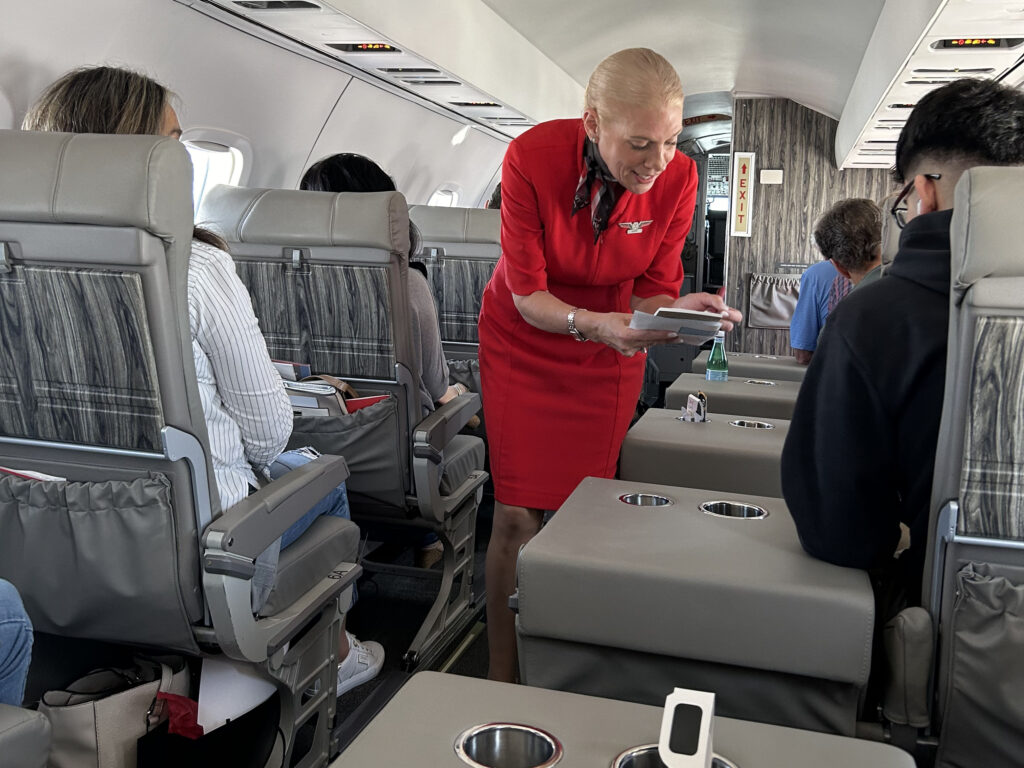
Photo: Courtesy of Alesandra Dubin
Among the passengers, excitement was high as we took off over Dallas. After we climbed to 36,000 feet, Kuhn passed through the cabin offering specialty drinks for the occasion: choice of a “Solar Sunset Spritz” —also known as an Aperol spritz— or “Eclipse Elixer,” activated charcoal lemonade.
Approximately 45 minutes after takeoff, the sky started to get darker, and Gregory, the pilot, kept us informed of our progress from the cockpit. Kuhn, the flight attendant, advised us to secure our drinks in preparation for some maneuvers.
The pilot planned to maneuver the plane to provide us with the best possible views, which would involve banking and turning in a way that might feel unfamiliar. As expected, the plane banked sharply, and I felt a bit queasy in my stomach.

Photo: Courtesy of Alesandra Dubin
Finally, it was the big moment of totality. The sky got black as late dusk, right in the middle of the day, and the cabin felt eerie — a moment of suspended animation.
When the plane banked sharply to the left, I got just a momentary view of the fiery ring from the plane’s right side, nearly above it. The other journalists on board and I dropped to our knees on the floor, contorting our bodies for better views out the windows and above the plane, but the consensus was the moment was hard to see from the plane and nearly impossible to photograph.
I am curious to know how the experience of flying compares to the experience of being on the ground.
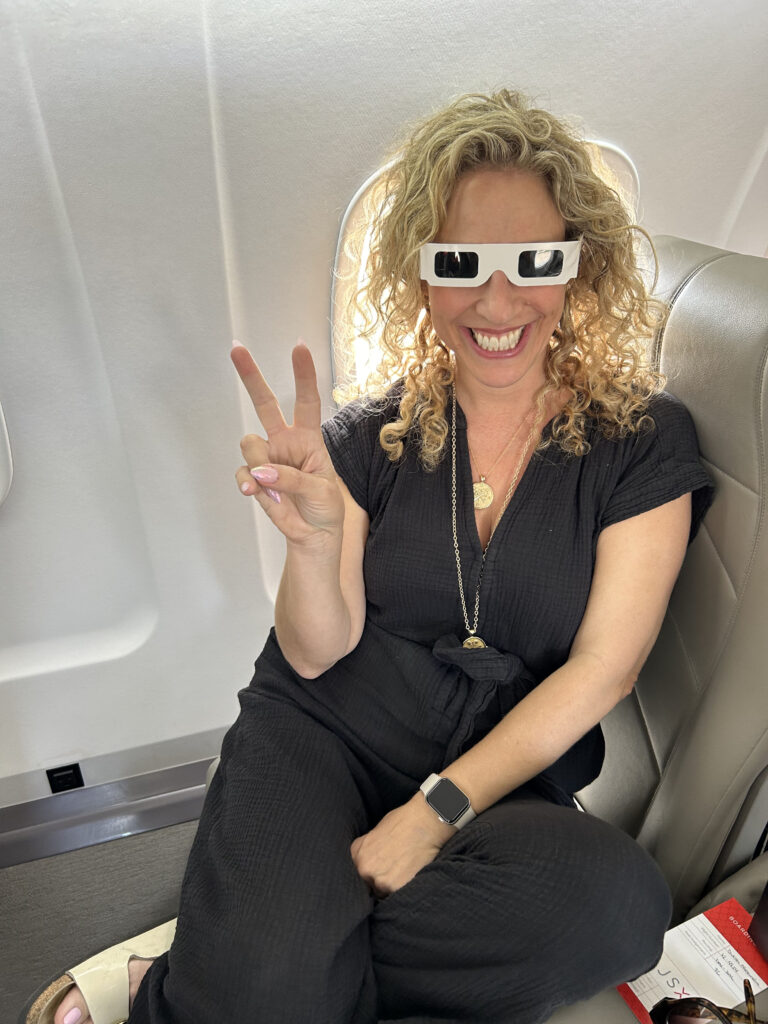
Photo: Courtesy of Alesandra Dubin
Gradually, daylight broke again, and we turned to head back to Dallas. Throughout the flight, Gregory shared fun eclipse facts from the cockpit. For instance, the temperature can drop to 20 degrees during a total solar eclipse.
And facts like, it’s estimated that one in 10,000 people will see a total solar eclipse in their lifetime. Now, I’m grateful I get to say I was one of them.
